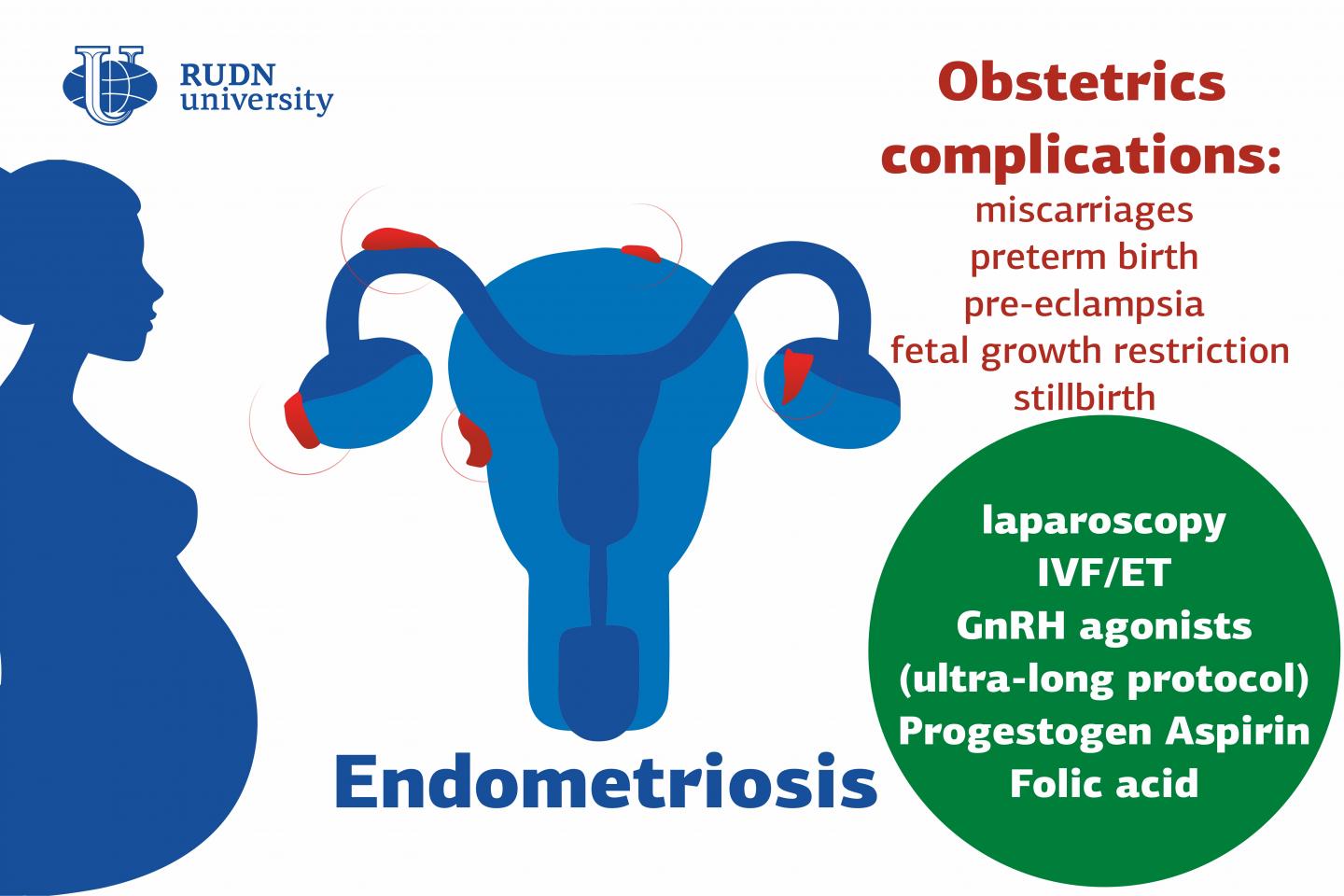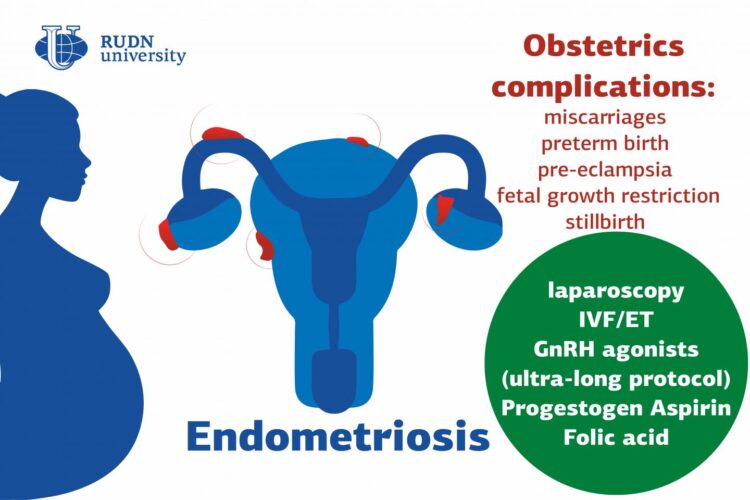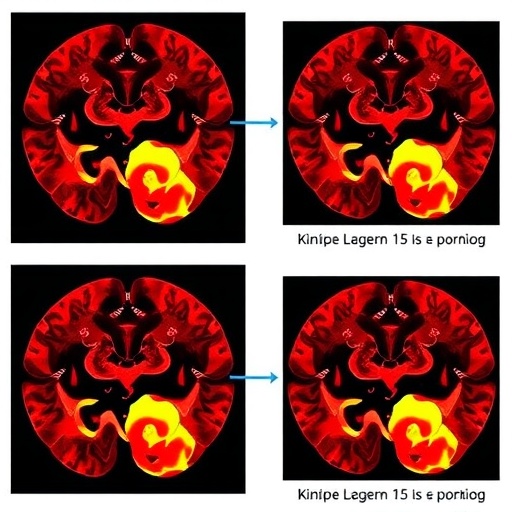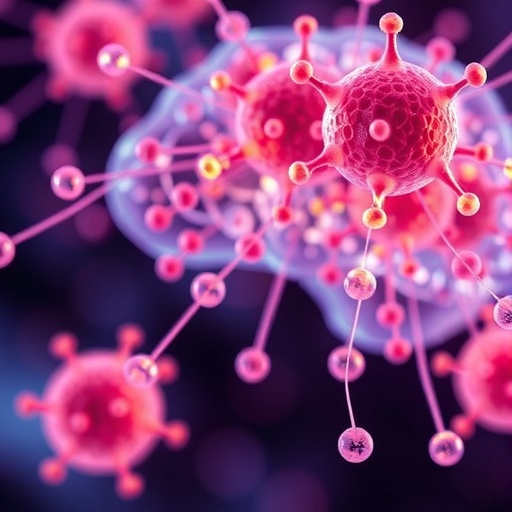
Credit: RUDN University
A team of doctors from RUDN University with their Italian colleagues had studied the data of existing studies on the effect of endometriosis on pregnancy and childbirth and suggested ways to reduce obstetrical complications in women with this condition. The results of the work were published in The Journal of Maternal-Fetal&Neonatal Medicine.
Endometriosis is a pathological process accompanied by growth of benign of tissues (that are morphologically and functionally similar to endometrium) outside the uterine cavity. In the premenstrual phase, the endometrium becomes thicker, and if the ovum is not fertilized, it sheds and is removed from the uterine cavity with the menstruations. This process is almost painless in healthy women but in patients with endometriosis, it is accompanied by the inflammation of surrounding tissues. Such patients suffer from chronic pelvic pain, menstrual cramps, painful intercourse, and often infertility. 10% to 15% of women of reproductive age have endometriosis and 30% to 40% experience birth complications. Despite such prevalence of endometriosis, the patterns of obstetrical complications haven’t been properly studied yet. A team of doctors from RUDN University with their Italian colleagues was had studied the data of earlier works and proposed the ways for preventing obstetrical complications in women with this condition.
“Earlier studies focused on the biological factors that affect the gestation course in women with endometriosis. We know that patients with endometriosis may experience miscarriages, preterm birth, or other complications due to immunological and endocrinal disorders in the endometrium. However, the mechanism of obstetrical complications is still a not well-clarified issue. That is why we conducted a systematic review of the literature and studied the effects of endometriosis on pregnancy taking into account such factors as treatment and conception methods, as well as stage and localization of the pathological process. We also suggested ways for preventing obstetrical complications in patients with a history of endometriosis,” said Doctor Anna V. Borisova, PhD, assistant at the Department of Obstetrics and Gynecology with the Course of Perinatology, RUDN University.
The team analyzed the results of earlier studies taking into account each possible complication: preterm birth, hypertensive complications in pregnancy, placental abnormalities, risk of cesarean section, underweight of the fetus, and stillbirth. Based on the results of the study, the team suggested several methods to improve pregnancy prognosis. Namely, laparoscopy was mentioned as the main treatment option in case of adhesions. Laparoscopy is a modern surgical method that allows doctors to destroy the adhesions between peritoneal and pelvic organs using special endoscopic devices. This helps combat infertility and reduces discomfort and pain in patients with endometriosis. According to the team, the conception’s methods should be chosen based on the stages of the disease. Patients with advanced stages of endometriosis are recommended to undergo hormone therapy and women after surgery — in vitro fertilization with embryo transfer (IVF/ET). The team had suggested that all patients with diagnosed endometriosis should start taking 400 micrograms of folic acid in advance before conception to reduce the risks of preterm birth and spina bifida in the fetus leading to anencephaly (a lethal developmental defect in which a fetus has no cerebral hemispheres and calvarial bones).
“The results of different studies are controversial: some of them did not take concomitant hormone therapy into account; and some had methodological limitations. However, we managed to develop a rather clear picture of all possible obstetrical complications in patients with endometriosis, establish causal relations, and identify issues for further discussion,” added Romeo Konnon, PhD, assistant professor at the Department of Obstetrics and Gynecology with the Course of Perinatology, RUDN University.
###
Media Contact
Valeriya Antonova
[email protected]
Related Journal Article
http://dx.





